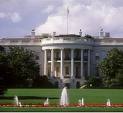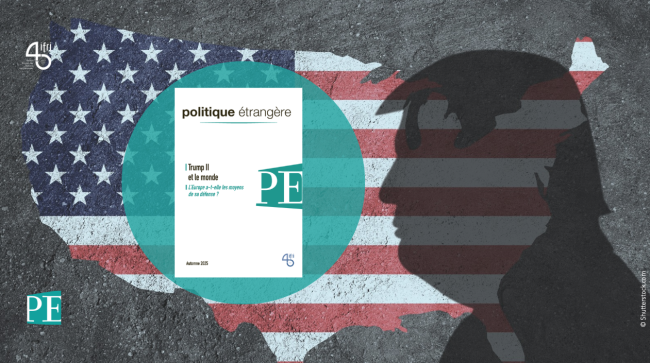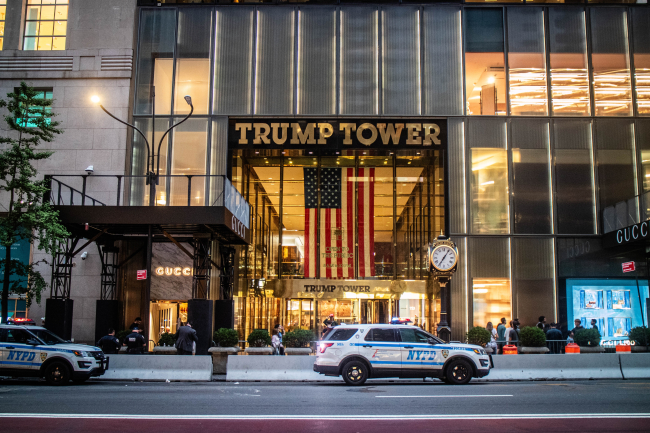Is Omar Sy an Uncle Tom? Race relations in America and France as seen through "Les Intouchables"

The Intouchables tells the story of a young Senegalese immigrant named Driss, who has been hired to be the caretaker of Philippe, a rich tetraplegic. The feel-good comedy has been a smashing success in France and across the world, grossing over $350m worldwide. While reviews of the film both in France and abroad have been mostly positive, there is a contingent of American critics that thinks that The Intouchables highlights racial stereotypes.
The most outspoken such review comes from Variety magazine critic Jay Weissberg. In his scathing review, he writes that the film “flings about the kind of Uncle Tom racism one hopes has permanently exited American screens,” and that the main character Driss is depicted as “nothing but a performing monkey (with all the racist associations of such a term), teaching the stuck-up white folk how to get ‘down".” A critic for the New Yorker called it “a national embarrassment.”
Indeed, watching the film, it becomes understandable why some American critics feel this way. It is readily apparent that the characters are practically caricatures of themselves: Driss is a stereotypical “sketchy black man from the ghetto” with a criminal past and impeccable dance moves, while Philippe is a stuck up, blue-blooded aristocrat who enjoys classical music and fine art. Philippe, it seems, is incapable of enjoying life anymore, but voilà! Driss enters the scene and provides the rhythm and entertainment that Philippe desperately needs in his life.
Negative American reactions to the movie stem from these caricatures and how they fit in to the dynamic of race relations in the US. It just so happens that the portrayal of Driss touches on several powerful and highly negative stereotypes of African-Americans: that they are lazy and only want government benefits, that they are uneducated and “uncultured”, and that they are to be feared because they are violent and aggressive.
Most jarringly though, these characteristics are portrayed in an incredibly blatant and obvious way; there is no subtlety. For example, in the scene where Driss interviews for the open position, he immediately slams a piece of paper onto Philippe’s table and demands that it is signed so that he can receive welfare benefits. Other scenes, such as one in which one of Philippe’s assistants is shown to find a butterfly knife and club in Driss’s bag are equally blunt.
In the US, race and racial stereotypes are considered taboo; there have been so many prolonged and painful chapters in the history of black-white relations that the topic of race is likely to evoke extremely strong emotions and opinions. Because the issue of race is such an emotionally charged topic, it is hardly ever discussed, with tensions instead allowed to simmer just beneath the surface, only occasionally violently bursting through to the public consciousness. Watching a scene where Driss teaches the uptight white people at Philippe’s party how to “get down” to Earth, Wind, and Fire is therefore not only incredibly clichéd but also uncomfortable and cringe-inducing because they serve to remind us of these unspoken stereotypes. It is this stark contrast between the hush-hush tone in which race and stereotypes are discussed in the US and the vivid display of racial stereotypes which can make the movie so uncomfortable for sensitive American viewers. While others may be able overlook these racial themes and stereotypes as many critics did, because of the US’s unique experiences with race relations, Driss’s character inevitably comes off as what is known as a “Magical Negro” (a black person who appears and through his mysterious and “magical” knowledge or personality helps a white person with his problems) or “Uncle Tom” (a black person who is willfully subservient or submissive to a white person) type.
In contrast, French critics did not mention racial overtones in their reviews of the film. In addition to its overwhelming commercial success, it has also been received quite positively. Even though race relations in France are of course far from perfect, concepts such as “Uncle Tom” or “Magical Negro” have no real meaning there. Indeed, there has been some pushback from both the directors as well as critics against the opinion that the movie is racist. Pierre-Andre Taguieff, a philosopher and a director of research at Sciences Po, said in response to the Variety review: “In the Variety article, I perceive the expression of an inquisitorial spirit that, colored by paranoia, remains rather rare in France among journalistic critiques. This anti-racist extremism is, in my eyes, an American specialty.”
French criticism of the movie instead takes a different path, as newspaper Libération notes that “…we laugh, we cry, what more? More, always more. The dictatorship of emotion covers the total absence of thought like a fig leaf.” These reviews and others like it, instead of seeing racism, see simplicity, naiveté, and reductionism. Relations between the classes that Driss and Philippe represent are not as happy as the movie suggests. Pierre-Andre Taguieff adds in the interview with the LA Times that the movie “‘flattered" a sugared French perception of itself as a place where ‘the rich and the poor, the blacks and the whites can get along.”
However, the reason French audiences perceive the movie differently is because the nature of race relations is completely different there. The fact that Driss is black isn’t the most important factor in how he interacts with Philippe. Instead, French perception of Driss’s character is that he is a typical poor immigrant living in the suburbs with bleak prospects. His entrance into Philippe’s world has no relation to the American slave/master relationship, but rather, it represents the meeting between someone who is economically, physically, and culturally on the periphery of the world of the white cultural and economic elite that Philippe represents. What makes the film so popular is that both Philippe and Driss both significantly enrich each other’s lives through both meaningful and comedic moments. Driss introduces his streetwise, no-nonsense personality into Philippe’s stuffy and uptight household, thereby invigorating it. Driss, meanwhile, gains valuable work experience and “cultural knowledge” that he uses to get another job afterwards, not to mention the 11.000 Euros from the painting that Philippe sold.
The Intouchables also serves to highlight the distinction between how African and Arab immigrants are received. While the film illustrates how the protagonists" worlds are completely different, it is a source of comedy rather than tension; in reality, of course, things are different and much more complex. In the original true story that is the basis for the movie, the caretaker was an Algerian man named Abdel. As recent controversies over veils and halal meat have shown, the integration of North African immigrants and their children can sometimes be especially difficult. Whether the character was changed to an African immigrant because the directors were particularly keen on Omar Sy or whether an Arab character would have been received differently is, of course, a matter of speculation.

Available in:
Regions and themes
Share
Related centers and programs
Discover our other research centers and programsFind out more
Discover all our analysesBrazil One Year Away from the October 2026 General Elections
Brazil’s general elections will be held on October 4, 2026, to elect the president, vice-president, members of the National Congress, governors, deputy governors and state legislative assemblies. For the presidential and gubernatorial elections, a second round will be held on October 25 if no candidate obtains a majority of the votes in the first round.
Trump II: The Clash of Ideologies
The second Trump administration brings together a number of very different, even opposing, ideologies: far-right populism, the reactionary Christian right, paleolibertarianism, and technolibertarianism. The most visible measures taken since Donald Trump's return to the White House have been populist in nature, with the president's authority strengthened, checks and balances weakened, a form of identity politics embraced, and economic nationalism implemented.
Water in Mexico: an Emergency that Will Wait
Access to water is already and will become increasingly problematic for Mexican economic actors due to the progressive scarcity of the resource resulting from climate change, a geographical distribution that does not coincide with that of the population or economic activity, and management that has so far been far too lax.
Donald Trump v. the States: the Case of New York
While the disruptive policies of the second Trump administration are being implemented at the federal level and on the international stage, they are also being felt in the federal states and major cities across the country. In the spring of 2025, several cases involving the state and city of New York demonstrate that the president’s attacks on environmental protection, the separation of powers, freedom of speech, etc., are also being carried out at the local level.









